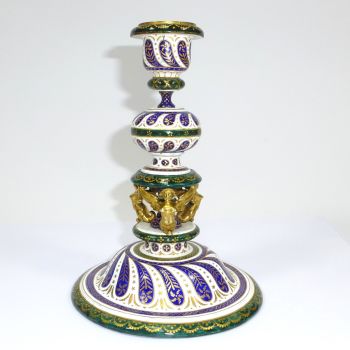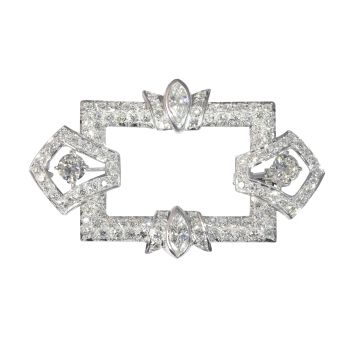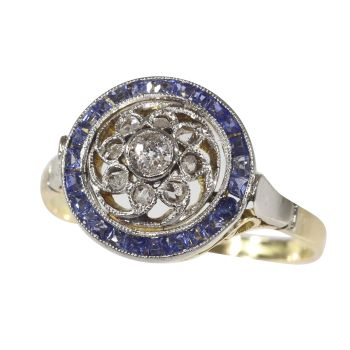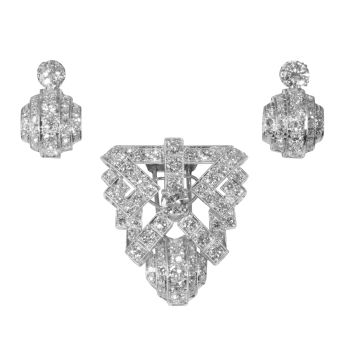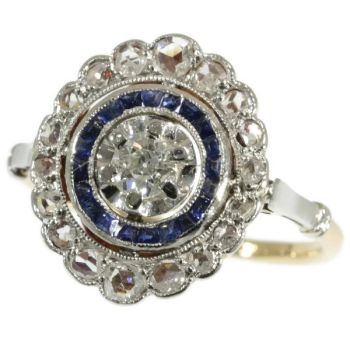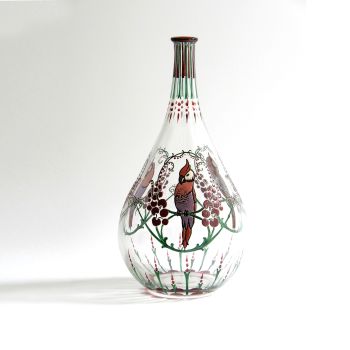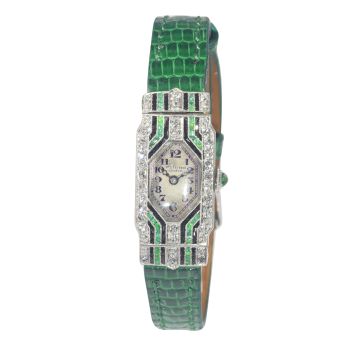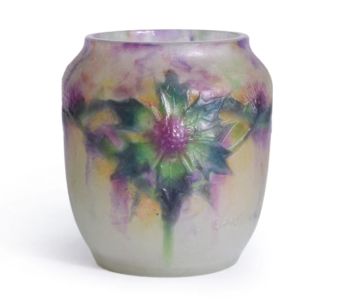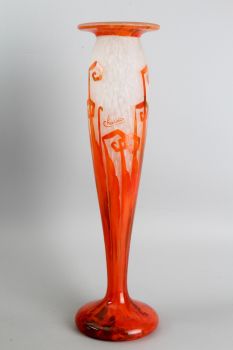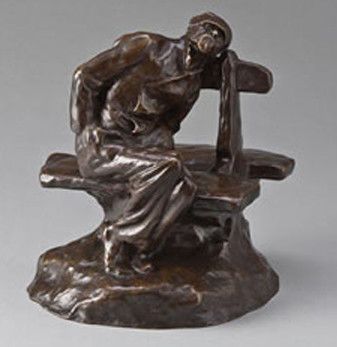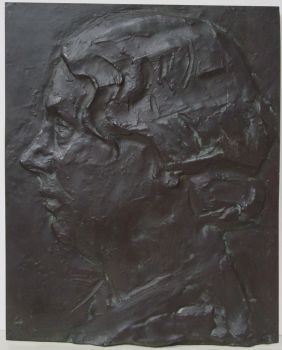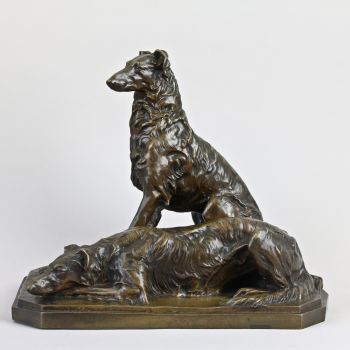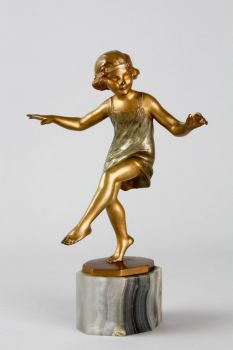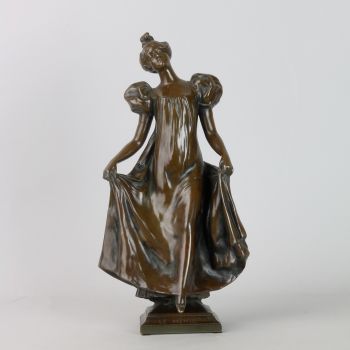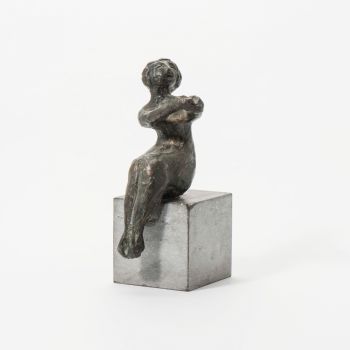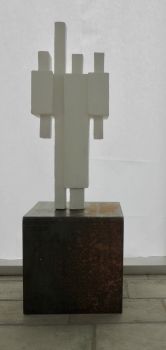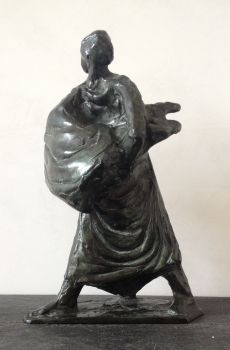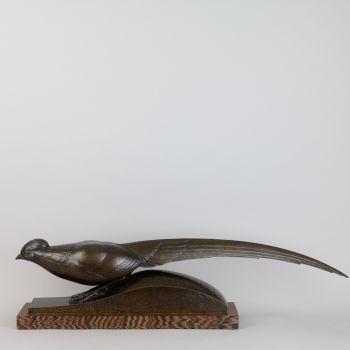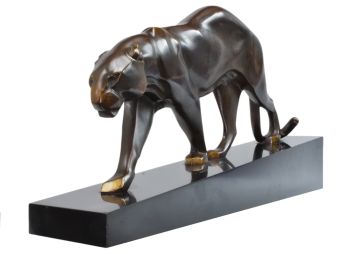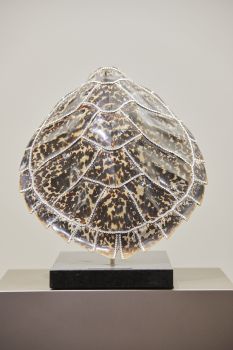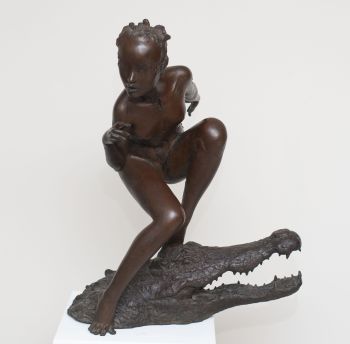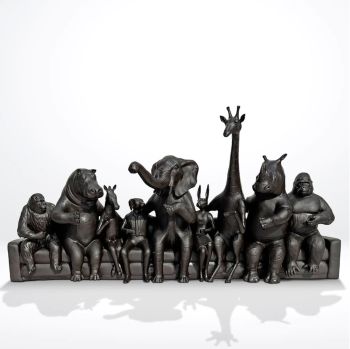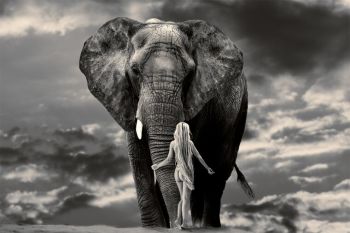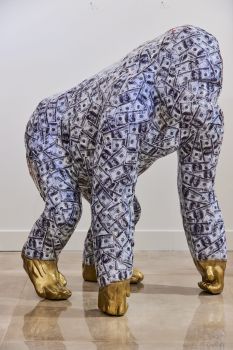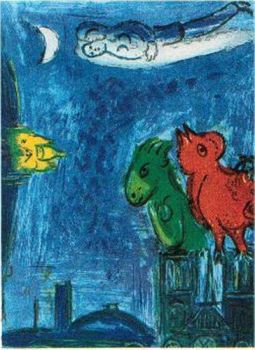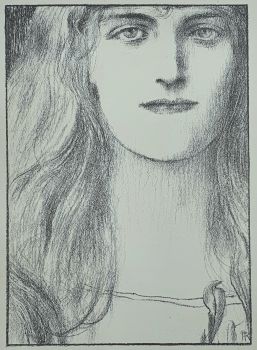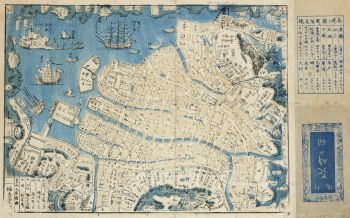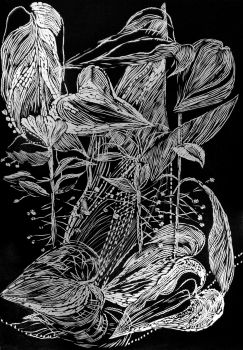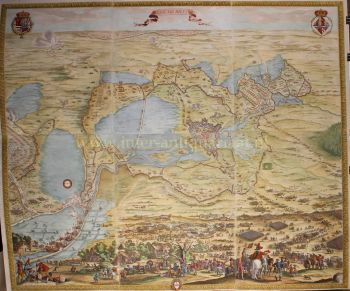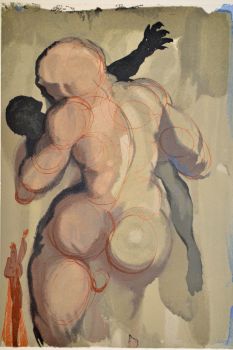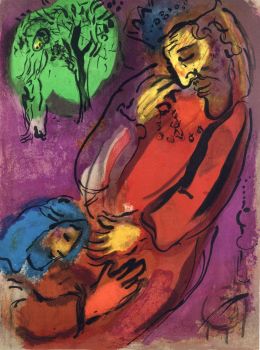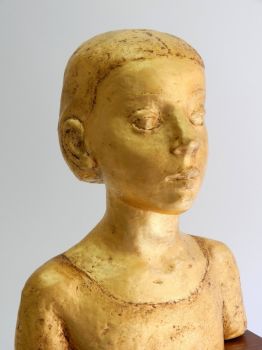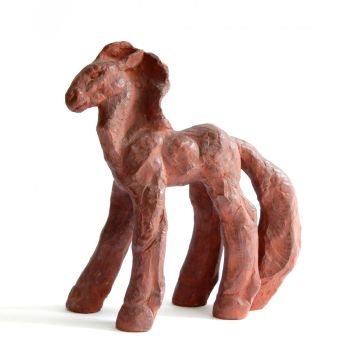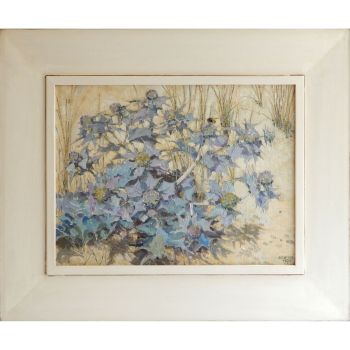Art Deco sitting Panther 1925 - 1935
Fritz Behn (Attr.)
AfdrukkenHoutsnede
30 cm
ConditionRestored
Prijs op aanvraag
Dille Art
- Over kunstwerkWooden Panther, from the 1920s-1930s, the Art Deco Period
This panther is carved directly from wood. I call it a panther, but it could also be a leopard or a puma; it’s hard to tell. The artist, Fritz Behn, intended to carve it from a single piece of wood, including the base. Sometimes, he just fell short and had to add a small piece, which is still visible in this case.
The panther is magnificent in its appearance. It truly stands in all its glory.
Fritz Behn made several trips to East Africa, where he studied wild animals. These journeys brought him international recognition. His animal sculptures were highly appreciated, and he received numerous commissions for large public works.
Unfortunately, this panther is not signed. Nevertheless, it is attributed to the German sculptor Fritz Behn (1878–1970), who portrayed many animals, most of which were cast in bronze. His subjects often included predators, particularly big cats like this panther. The way the panther sits on its base—at rest yet still alert—is characteristic of Behn’s work. The very detailed depiction of the claws is remarkable, while the rest of the body, such as the head, is lightly stylized in a way that aligns perfectly with his other works from the Art Deco period.
The wood has acquired a beautiful patina over time. The wooden base is carved as part of the design and has been ebonized, creating a stunning effect.
Secession. He worked diligently, and in 1904, he held his first solo exhibition at the Royal Exhibition Building on Königsplatz in Munich.
In 1905, 1907, and 1909, he participated in the Venice Biennale. During the years 1907–08 and 1909–10, he also traveled to the German colonies in East Africa. He enjoyed his time there, often embarking on safaris and creating many animal portraits in plaster—elephants, predators, monkeys, and more. Upon his return, he refined these works and had them cast in bronze.
Behn gained international recognition. An American magazine compared him to the French artist Antoine-Louis Barye. He also embarked on study trips, including to Paris, where he visited Rodin in 1912. He spent time in London and Italy as well, and his career thrived.
He received many commissions but also created a significant amount of independent work.
When World War I broke out, Behn was mobilized, but he developed lung problems. By mid-1916, his military service ended, and he returned to his art. He was strongly nationalistic, a trait he would unfortunately retain throughout his life.
During the 1920s, Behn spent several years in Brazil, partly for health reasons. He prospered financially there and eventually returned to Munich. He became a member of the NSDAP (Nazi Party) and created portrait busts of several prominent figures. During the war years, he served as the director of the academy. After the war, he was dismissed due to his party membership.
Despite this, Behn continued to work as a sculptor until his death in 1970.
Measurements:
Height: 30 cm (11,81")
Condition:
We asked a very experienced restorer to fill in the small cracks and touch up the pedestal in the worn, noticeable spots without compromising its appearance. After all, it's quite an old piece by now. The result is definitely impressive. - Over kunstenaar
Fritz Behn (1878–1970) was een beroemde Duitse beeldhouwer en kunstenaar die bekend stond om zijn meesterschap in beeldhouwkunst, anatomische tekeningen en gipsafgietsels. Behn werd geboren in Klein Grabow, Duitsland, en toonde al vroeg een affiniteit met kunst en een diepgaande interesse in de menselijke vorm. Zijn werk overbrugde vaak de grenzen van naturalisme en expressionisme, met een nauwgezette aandacht voor anatomische details en een innovatieve benadering van driedimensionale compositie.
Behns carrière bloeide in het begin van de 20e eeuw, waarbij zijn sculpturen lof oogstten vanwege hun dynamische energie en levensechte realisme. Hij staat vooral bekend om zijn openbare monumenten, dierensculpturen en portretbustes, die zowel fysieke nauwkeurigheid als emotionele diepgang vastlegden. Zijn reizen naar Afrika hadden een grote invloed op zijn artistieke stijl en inspireerden een reeks werken die zijn fascinatie voor wilde dieren en niet-Europese culturen weerspiegelden.
Naast zijn sculpturen leverde Behn belangrijke bijdragen aan de studie van anatomie in de kunst. Zijn gedetailleerde anatomische tekeningen en gipsafgietsels werden waardevolle referenties voor zowel kunstenaars als medische professionals, wat zijn technische vaardigheden en wetenschappelijke nieuwsgierigheid aantoonde. Behns vermogen om artistieke gevoeligheid te combineren met anatomische precisie, bevestigde zijn reputatie als multidisciplinair talent.
Behn woonde en werkte in Duitsland en Oostenrijk, waar zijn bijdragen aan de kunst hem talloze onderscheidingen opleverden. Zijn nalatenschap wordt bewaard in musea, openbare ruimtes en privécollecties, waar zijn werk nieuwe generaties kunstenaars en kunstliefhebbers blijft inspireren. Zijn toewijding aan het verkennen van de menselijke en dierlijke vorm blijft een bewijs van zijn blijvende impact op de 20e-eeuwse beeldhouwkunst en artistieke studies.
Bent u geïnteresseerd om dit kunstwerk te kopen?
Artwork details
Related artworks
Amalric Walter
Amalric Walter & Henri Bergé – Crabe plumier1920 - 1929
Prijs op aanvraagAntiques Emporium
Onbekende Kunstenaar
Antieke Saffier Broche sleutel1920
Prijs op aanvraagAnita Potters Juwelier Antiquair
1 - 4 / 24Lambertus Zijl
Portret van Juliana, koningin der Nederlanden (1948-1990)1900 - 1950
Prijs op aanvraagKunsthandel Pygmalion
1 - 4 / 24- 1 - 4 / 24
- 1 - 4 / 24
- 1 - 4 / 12






